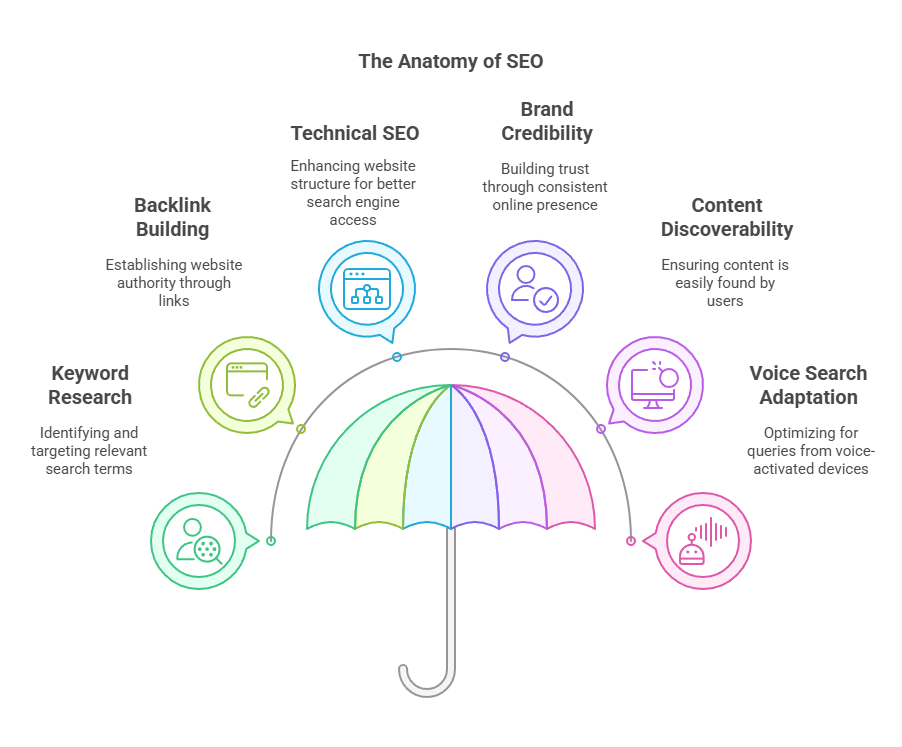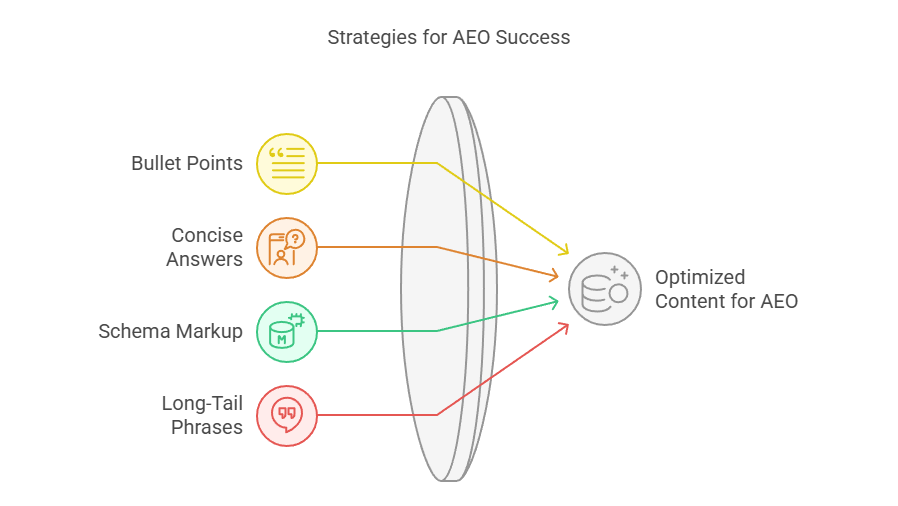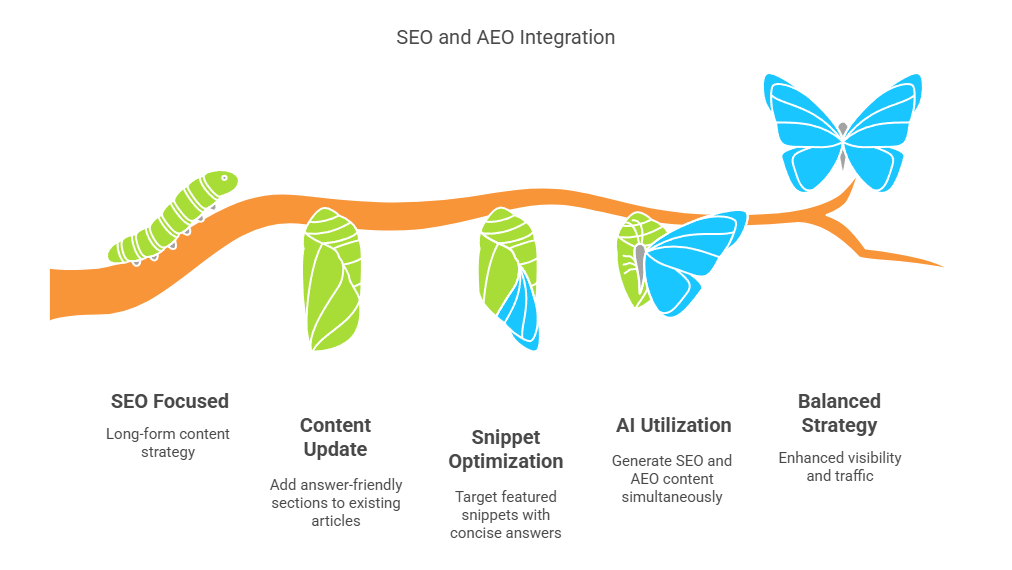The digital marketing landscape is evolving faster than ever, and businesses must adapt to stay visible. While Search Engine Optimization (SEO) has long been the cornerstone of online visibility, Answer Engine Optimization (AEO) is emerging as a critical strategy in 2025. This article breaks down their differences, synergies, and how tools like WriterX empower marketers to leverage both for maximum impact.
What Is SEO? The Backbone of Digital Visibility
SEO focuses on optimizing websites to rank higher on search engine results pages (SERPs). It involves strategies like keyword research, backlink building, and technical tweaks to improve crawlability and user experience. For example, a blog post targeting “best AI writing tools” might use SEO to appear on Google’s first page, driving organic traffic through detailed comparisons and reviews. Platforms like WriterX simplify SEO with features like automated keyword optimization, ensuring content aligns with Google’s E-E-A-T guidelines for trust and authority.
Why SEO Still Matters
SEO remains essential for long-term organic growth. It builds brand credibility, attracts targeted traffic, and supports content discoverability. However, traditional SEO struggles with voice searches and AI-driven queries, which prioritize direct answers over keyword density. For instance, a user asking Alexa, “How to optimize WordPress for SEO?” expects an immediate solution, not a list of articles. This shift highlights the need for AEO to complement existing SEO efforts.

What Is AEO? The Rise of Instant Answers
AEO focuses on crafting content that answers user queries directly, often bypassing traditional SERPs. Instead of driving clicks, AEO aims to position your content as the primary source for AI tools like ChatGPT, Google’s Featured Snippets, or voice assistants. For example, a FAQ section optimized with schema markup might appear as a voice search answer for “What is the best AI tool for blogs?” WriterX’s AI-driven content trends report highlights how AEO dominates 2025’s conversational search landscape.
Key AEO Strategies
Optimizing for AEO requires a shift in content structure. Use bullet points, concise answers, and schema markup to help AI parse information quickly. Tools like WriterX automate this process, generating bulk FAQ pages tailored for voice search. Additionally, focus on long-tail, conversational phrases like “How do I start a food blog?” rather than generic keywords. This approach not only satisfies answer engines but also aligns with Google’s emphasis on user intent.

SEO vs AEO: Key Differences
While both strategies aim to boost visibility, their methods and outcomes differ significantly:
1. Content Structure
SEO thrives on long-form, in-depth articles (1,500+ words) to cover topics comprehensively. AEO, however, prioritizes brevity. For example, a recipe blog using SEO might publish a 2,000-word post with personal anecdotes, while its AEO counterpart would highlight cooking steps in a bulleted list with schema markup for voice assistants.
2. Keyword Approach
SEO targets broad keywords like “content marketing tools,” while AEO focuses on question-based phrases like “What’s the best AI tool for content marketing?” WriterX’s long-tail keyword guide shows how blending both strategies captures diverse search intents.
3. Technical Requirements
SEO demands technical optimizations like mobile responsiveness and site speed. AEO relies heavily on structured data to help AI tools extract answers. For WordPress users, plugins like WriterX’s AI integration automate schema markup, making content answer-ready without coding.
Why You Need Both in 2025
Ignoring AEO risks losing visibility in voice searches and AI overviews, while neglecting SEO sacrifices organic traffic. Here’s how to integrate them:
1. Layer AEO onto Existing Content
Update top-performing SEO articles with answer-friendly sections. Add a “Quick Answers” box at the top of a blog post, summarizing key points in bullet form. WriterX’s bulk editing tools streamline this process across hundreds of posts.
2. Optimize for Featured Snippets
Target “Position 0” by answering questions within the first 100 words. Use headers like “What is…?” or “How to…” and keep paragraphs under three lines. Tools like WriterX analyze competitors’ snippets, suggesting optimizations to outrank them.
3. Leverage AI for Dual Optimization
AI platforms like WriterX generate SEO and AEO content simultaneously. For instance, a single input like “benefits of AI writing tools” produces a long-form blog (SEO) and a voice-search-optimized FAQ (AEO). This dual approach saves time while maximizing reach.

The Future of Search: Where AEO and SEO Collide
By 2026, experts predict 70% of searches will be voice or AI-driven. Businesses that master both strategies will dominate niches. A local bakery using SEO for “best cupcakes in Chicago” and AEO for “Where can I buy gluten-free cupcakes near me?” captures both typed and spoken queries. Meanwhile, tools like WriterX’s automated WordPress posting ensure content stays fresh for evolving algorithms.
The line between SEO and AEO will blur as AI reshapes search behavior. Platforms like WriterX bridge this gap, offering AI-powered workflows that adapt to both strategies. Whether you’re a small business or a marketing agency, blending SEO’s depth with AEO’s precision ensures you’re ready for the next search revolution.

